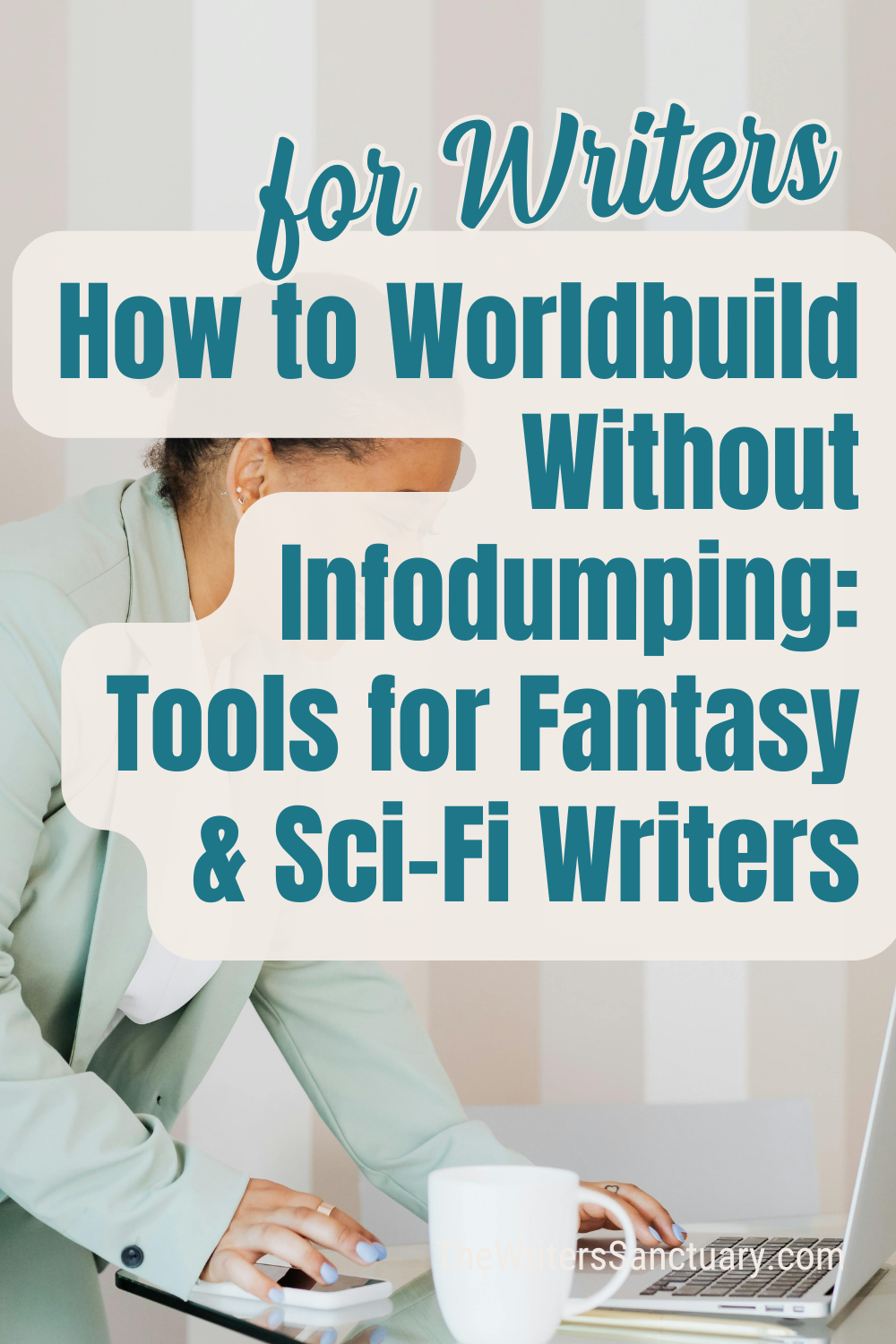How to Worldbuild Without Infodumping: Tools for Fantasy & Sci-Fi Writers
We’ve all read that book—the one where the story stops cold so we can get a history lesson on royal bloodlines or a step-by-step breakdown of how the underwater transit system works. It might be cool info, but if it reads like a lecture, readers will start skimming.
The secret isn’t building less world, it’s knowing how to layer it in so it feels like part of the story, not a detour from it. Here’s how to do that.
Start with what your character notices.
Your protagonist isn’t thinking about how the economy functions unless it directly affects them. But if they’re broke and trying to bribe a guard, suddenly a few details about currency and corruption fit perfectly.
Use character-focused cues like:
What’s familiar to them
What’s uncomfortable or new
What they’re actively trying to avoid or navigate
Worldbuilding works best when it’s tied to action, emotion, or stakes.
Use dialogue naturally.
Dialogue can be a great delivery tool, but only if it sounds like something a real person would say. Avoid “as you know, Captain” moments where characters explain things they already understand.
Try instead:
A heated argument that reveals class systems or rival factions
A warning that drops hints about laws or dangers
A misunderstanding between cultures that sparks curiosity
Tension creates space for world info to surface without feeling forced.
Anchor the world through sensory details.
You don’t need to describe every building. Just give us one or two vivid, sensory details we can hang onto. This helps readers feel immersed the world without needing to fully understand it yet.
Think in terms of:
Smells (burnt ozone, damp ash, street food spice)
Sounds (buzz of faulty tech, whispers under breath, war drums)
Texture (grit, oil, blood, velvet, ash, frostbite)
Raise questions before you answer them.
It’s okay, actually, it’s good, to leave some things unexplained at first. Curiosity keeps readers engaged. (There’s a balance to igniting curiosity AND providing enough context for the reader to be engaged and not confused.)
Let readers wonder about:
Why people go silent when someone mentions the Iron Gate
What happened during the winter solstice
Why your character keeps glancing at the sky when they lie
A little mystery gives your world room to breathe and feel alive.
Let the environment do the talking.
Sometimes the setting says more than a paragraph ever could. Background objects, clothing, architecture, and signage can all deliver context with zero exposition.
You can show worldbuilding through:
A torn propaganda poster on the alley wall
Inked tattoos that signal social status
Food packaged with a government seal
A street vendor selling relics no one wants to touch
This kind of ambient worldbuilding adds depth without slowing the pace.
Don’t front-load everything.
One of the biggest temptations is to explain the entire system in chapter one. Don’t. Readers need to care about the character first. Once they’re emotionally hooked, they’ll want to know how the world works.
Instead:
Drip in rules as characters bump up against them
Introduce consequences before the full explanation
Hold off on detailed explanations until they affect the outcome
Think of worldbuilding as something that unfolds over time, not something readers need a manual for right away.
Bottom line: Your world doesn’t need to be explained, it needs to be felt. If your character lives it, your reader will believe it. Focus on what matters in the moment, trust your reader to follow the breadcrumbs, and let your setting support the story, not stall it.
Want help weaving immersive worldbuilding into a strong, character-driven draft?
The Storyteller’s Weekly Journal is your month-by-month guide through the full novel process—from messy beginnings and world sketches to editing and pitching. With weekly guidance, writing tools, and space to plan as you go, it helps you keep momentum without sacrificing depth.
Grab your copy and start building a world your readers will never want to leave!


